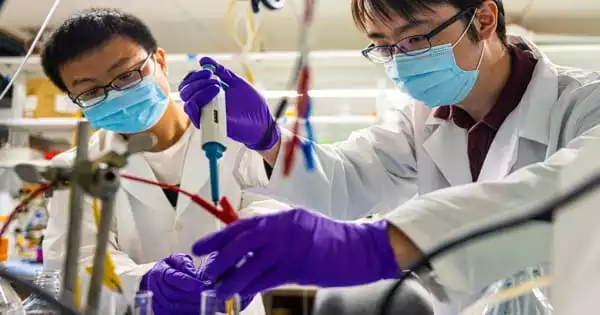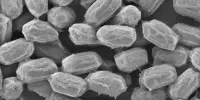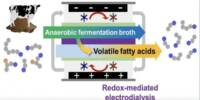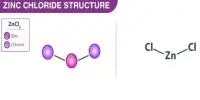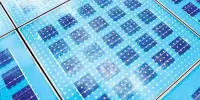Engineers have created a high-performance nanowire catalyst that extracts ammonia and solid ammonia (fertilizer) from nitrate, which is a frequent contaminant in industrial effluent and polluted groundwater. A smattering of ruthenium atoms on a mesh of copper nanowires could be the first step toward a global ammonia industry revolution that also benefits the environment.
Collaborators from Rice University’s George R. Brown School of Engineering, Arizona State University, and Pacific Northwest National Laboratory created a high-performance catalyst that can pull ammonia and solid ammonia – aka fertilizer – from low levels of nitrates found in industrial wastewater and polluted groundwater with near-100 percent efficiency.
According to a study lead by Rice chemical and biomolecular engineer Haotian Wang, the technique turns nitrate levels of 2,000 parts per million into ammonia, which is then collected using an effective gas stripping procedure. Following these treatments, the remaining nitrogen content can be reduced to “drinkable” levels as determined by the World Health Organization.
“We completed the entire water denitrification process,” stated Feng-Yang Chen, a graduate student. “With additional water treatment on other toxins, we may be able to convert industrial effluent back to drinking water.”
Chen is one of three lead authors on the research published in Nature Nanotechnology. The study demonstrates a possible alternative toward efficient operations for a sector that relies on an energy-intensive method to manufacture more than 170 million tons of ammonia each year.
We completed the entire water denitrification process. With additional water treatment on other toxins, we may be able to convert industrial effluent back to drinking water.
Feng-Yang Chen
Previous research has shown that ruthenium atoms are masters at catalyzing nitrate-rich effluent. Their innovation was mixing it with copper, which suppresses the hydrogen evolution reaction, a method of producing hydrogen from water that in this case is an undesired side effect.
“We knew that ruthenium was a good metal choice for nitrate reduction, but we also knew that it might easily have a competing reaction, which is hydrogen evolution,” Chen explained. “When we applied current, many of the electrons went to hydrogen, which is not the result we want.”
“We took a notion from other fields, such as carbon dioxide reduction, that employs copper to limit hydrogen evolution,” Wang noted. “Then we had to figure out how to combine ruthenium and copper naturally. It turns out that distributing single ruthenium atoms into the copper matrix is the most effective method.”
The team used density functional theory calculations to explain why ruthenium atoms make the chemical path that connects nitrate and ammonia easier to cross, according to co-corresponding author Christopher Muhich, an assistant professor of chemical engineering at Arizona State.
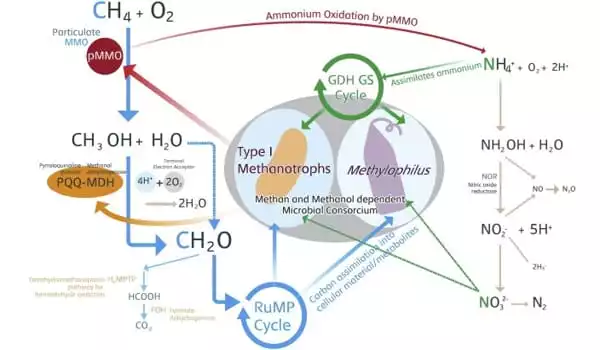
“Water gets in the way when there is simply ruthenium,” Muhich explained. “There isn’t enough water to provide hydrogen atoms when there is only copper. Water, on the other hand, does not compete as well on the single ruthenium sites, supplying just enough hydrogen without taking up locations for nitrate to react.”
The process operates at room temperature and pressure, with a “industrial-relevant” nitrate reduction current of 1 amp per square centimeter, the amount of electricity required to maximum catalytic rate. According to Chen, this should make scaling up simple.
“I believe this has a lot of potential, but it’s been overlooked since prior studies found it difficult to achieve such a high current density while still retaining acceptable product selectivity, especially at low nitrate concentrations,” he added. “But now we’re displaying it. I’m certain that we’ll be able to push this method for industrial applications, especially since it doesn’t necessitate large infrastructure.”
One major advantage of the technique is that it reduces carbon dioxide emissions from traditional industrial ammonia production. These are not insignificant, accounting for 1.4 percent of global annual emissions, according to the study.
“While we recognize that converting nitrate wastes to ammonia may not be able to fully replace the existing ammonia industry in the short term,” Wang said, “we believe this process could make significant contributions to decentralized ammonia production, particularly in areas with high nitrate sources.”
In addition to the new study, Wang’s lab and that of Rice environmental engineer Pedro Alvarez, director of the Nanotechnology Enabled Water Treatment (NEWT) Center, published a paper in the Journal of Physical Chemistry C detailing the use of cobalt-copper nanoparticles on a 3D carbon fiber paper substrate as an efficient catalyst to synthesize ammonia from nitrate reduction. This low-cost catalyst also showed significant promise for wastewater denitrification.
